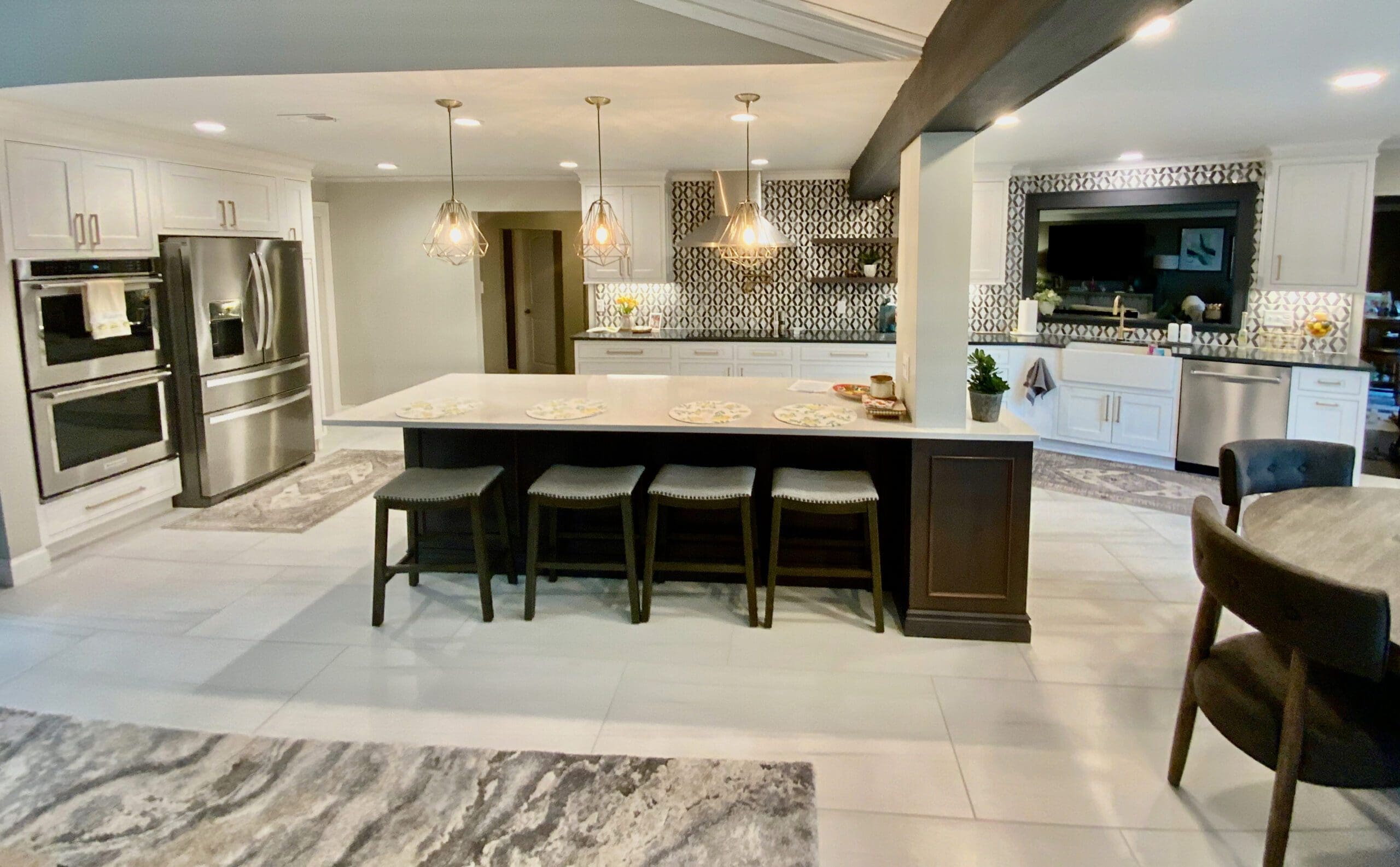Should You Hire a Contractor or DIY?
Author: Thomas Borcherding | Updated On:
Is A Professional Remodeler Right For You?
Despite us being professional contractors, this article was written with the objective of being as unbiased as possible. We have no interest in manipulating individuals into making decisions that are not right for them. With that being said, in this article we outline the pros and cons of hiring a contractor versus DIYing. This includes covering the profit structure that contractors commonly adhere to. So, which option is best for you?

What Do Contractors Do?
A contractor, synonymous with general contractor, is a person or company that manages the entirety of a construction project that they were contracted to do. They are called contractors because not only are they contracted by the customer, they also subcontract work to skilled tradespeople in most cases. Subcontracting means that the contractor enters into separate contracts with talent they deem fit in order to fulfill their initial contract.
Instead of taking a risk by hiring a tradesman that you have never worked with before, contractors will have a trusted talent pool that they will utilize to complete your job. Further, the general contractor will also supervise said worker on your behalf, ensuring quality. It is entirely possible, albeit less common, that a contractor has in-house construction staff.
Said contractor will also have product vendors that they work with. While I cannot speak for all contractors, our average material discount is 50.5%. Having experience with products is another benefit of working with a contractor. Your remodeling professional would have experienced both the good and the bad products, and will be able to lead you towards the higher quality materials to put in your home.
Finally, due to their experience, contractors typically possess great design capabilities as well as trades knowledge. They will be able to suggest and set into motion design decisions that they feel best suit your wants and needs. Contractors will also provide you with architectural and design drawings, such as floor plans and 3D renderings that allow you to see what it is that you are getting. Your contractor will also navigate through the complex permit process on your behalf as well, should you decide to pull permits.

What Is The Most Cost Effective Remodeling Strategy?
Typically, the least expensive remodeling method is to personally perform your own remodel via sweat equity, while procuring materials from a contractor that has dealer relationships with product manufacturers.
This is due to the fact that contractors can order materials at 50% discounts, and typically only apply a 20-40% margin to the discounted price. However, some contractors will sell their materials at MSRP.
That leaves the following options: 1) sourcing the labor and materials yourself or, 2) hiring a contractor. It is hard to say which is more cost effective, as it is truly project dependent. The 50% discount that contractors experience allows for plenty of room for additional expenses such as labor and other materials.
It is our personal belief that if you are going to source labor and materials yourself, then you might as well hire a contractor and take advantage of their dealer relationship with vendors. We explore the mathematics behind this belief below.
How Much Extra Money Does A Contractor Cost?
While there are many benefits to hiring a contractor for your remodeling project, you will undoubtedly incur a higher remodeling price than DIYing your project using your own sweat equity.
The way that contractor’s make money is by first figuring how much your remodeling project will cost. A contractor’s cost is not the same as your cost due to their 50% discount on products.
After figuring their cost, which will include labor and materials, they will then apply a gross profit margin on top of this. This markup typically falls within the 20-30% range, but our experience has shown that some contractors have no remorse in applying gross profit margins as high as 100-200%. Their margins also depend on their business overhead; a larger business with more overhead will require higher margins.
Let’s put this into practice with an example. Say that the labor and material cost of your kitchen remodel runs $40,000 for your contractor. If your contractor wishes to obtain a 20% gross profit margin, then the markup on their cost would be $10,000. We outline the formula for applying a gross profit margin to a cost below:
Contractor Pricing = Contractor Cost / (1 – Gross Profit Margin)
$50,000 = $40,000 / (1 – 0.20)
Let’s try this on a less expensive project. Assume you’re having your hallway bathroom remodeled. Your contractor can do this at a $12,500 cost, and applies a 20% gross profit margin. Your final price would be $15,625, with the contractor markup being $3,125. Not all contractors price their projects this way, but this is the classic method for contractor pricing.
This math is not perfect, however. A contractor’s cost will not be the same cost that you incur, and thus the contractor markup is not actually as bad as it may seem.
Let’s assume that you order $20,000 worth of cabinetry. Your contractor can order the same cabinetry for $10,000. If your contractor wishes for a 20% gross profit margin, then ordering cabinetry from them would actually only cost you $12,500 (using the same formula as above).
As you can see, this leaves plenty of room for additional expenses such as other fixtures and labor. By the time you have paid for your cabinetry, a contractor could have paid for both your cabinetry and labor. Ordering materials from a contractor is also a great way to support your local economy.
It’s Getting Late
To recap, DIYing with your own sweat equity and contractor material procurement is typically the most economical remodeling strategy. This will not always be the case; sometimes procuring your own materials and performing the work yourself will be the cheapest route. Should you not wish to do the labor yourself, then it is recommended to seek a trusted contractor with whom you can work. We wish you the best of luck with your remodeling project.
About the Author

Thomas Borcherding is a professional kitchen & bath designer, and a member of the National Kitchen & Bath Association (NKBA). He is the second-generation owner of Homestar Design Remodel, and takes great joy in providing those in St. Louis with high-quality, affordable home remodeling.







